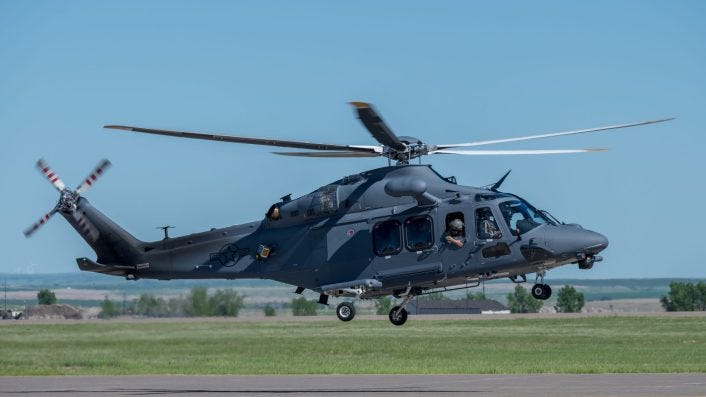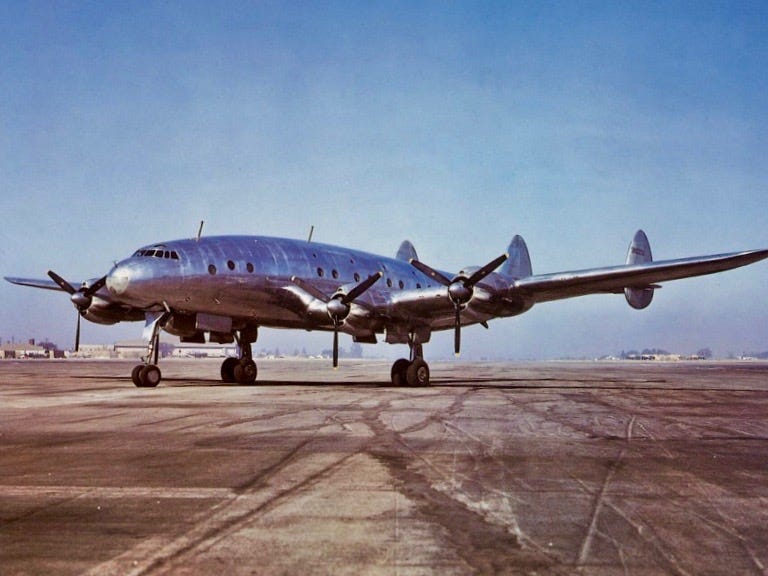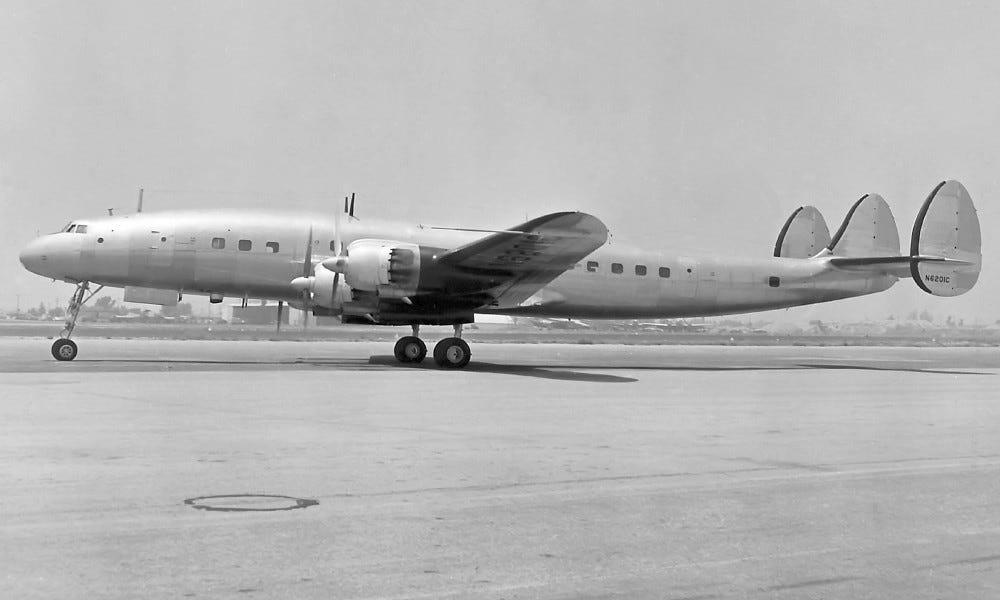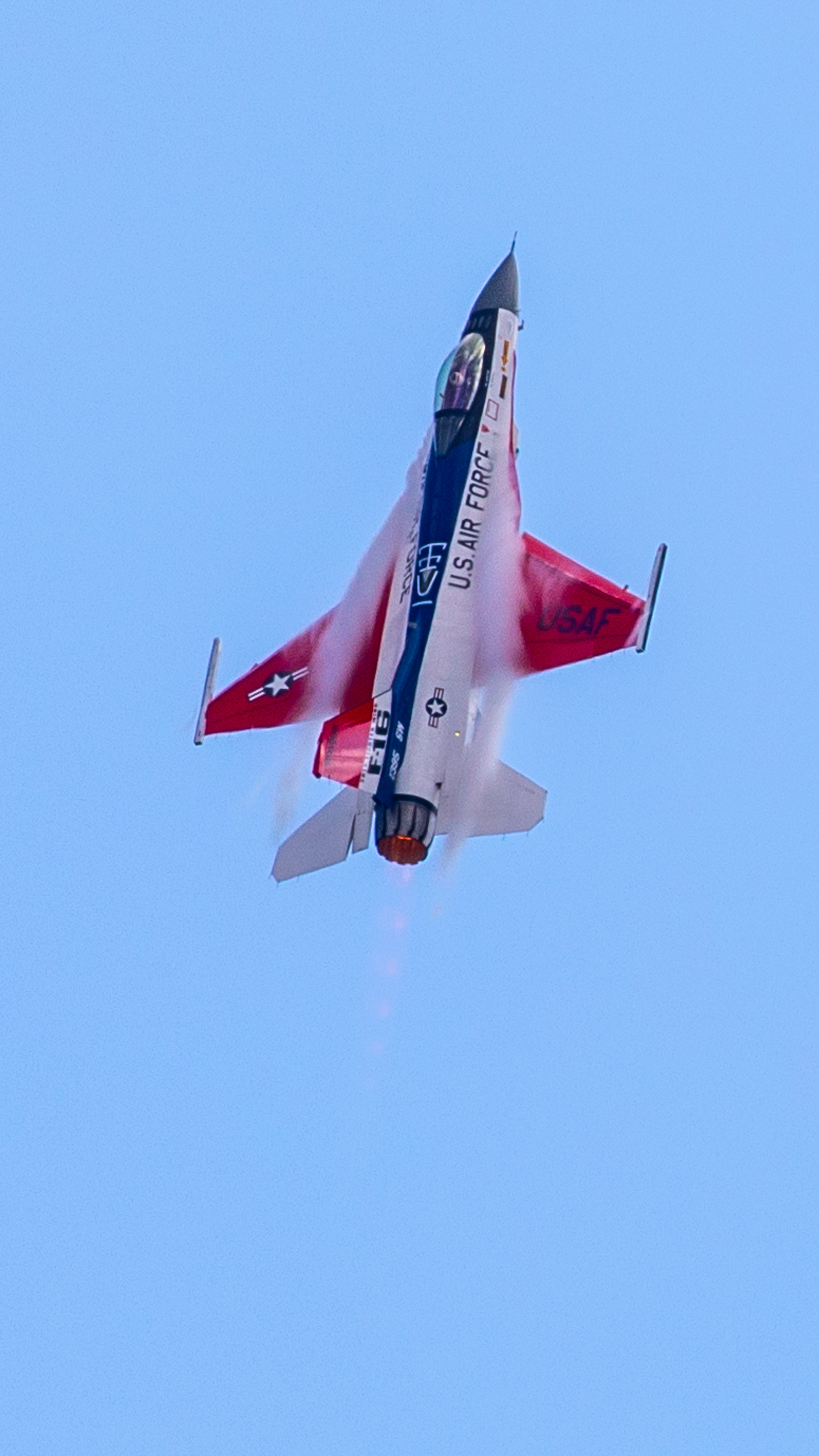From Wolves to Wings: The Grey Wolf Flies and remembering the Super Connie
DAs Boeing’s MH-139A proves its bite in its first real rescue, we look back 75 years to the elegant Super Constellation—the aircraft that bridged the gap between propellers and jets.
“The MH-139A offers increased speed, range, and payload capacity—critical to supporting U.S. national security missions.”
—Azeem Khan, Boeing MH-139 Program Director
Mission Briefing
The Grey Wolf Hunts at Night - Boeing’s MH-139A scores a $173 million boost as the Air Force’s next-generation Huey replacement makes its first real-world rescue over Montana.
The U.S. Air Force’s newest helicopter, the MH-139A Grey Wolf, has just proven it’s more than a nuclear security workhorse—it’s also a lifesaver. On the night of August 25–26, an MH-139A from the 40th Helicopter Squadron at Malmstrom Air Force Base, Montana, completed its first real-world search and rescue mission, locating and stabilizing a stranded hiker in the rugged Beartooth Mountains.
The Air Force officially announced the milestone just as Boeing secured a new $173 million contract to produce eight more MH-139As, bringing the total ordered to 34 aircraft. The contract follows the completion of the type’s Initial Operational Test and Evaluation (IOT&E) phase, paving the way toward Initial Operational Capability (IOC)—the last major hurdle before full-rate production.
Malmstrom received the first low-rate production Grey Wolfs in August 2024, replacing the venerable UH-1N Huey fleet that has guarded America’s missile fields for decades. The new helicopter—based on Leonardo’s AW139M and modified by Boeing—offers greater speed, range, and payload capacity, crucial for patrolling remote ICBM sites and supporting national security operations.
During the August rescue, the Grey Wolf crew—Captains Jacques Soto and Jaani Barclay, Staff Sergeants Chase Rose and Corbin Dietrich, and Maj. Collin Urbanowicz—were diverted from a night training mission to assist civilian authorities searching for a missing 73-year-old hiker. Using night vision goggles and FLIR sensors, they located a faint flashing light in a canyon surrounded by 11,000-foot peaks. After several aborted landings due to thin air and high winds, Urbanowicz was lowered by hoist to stabilize the man, who was later airlifted to safety at sunrise.
Beyond its first rescue, the Grey Wolf has also completed a Nuclear Convoy Course and multiple operational exercises testing its performance in simulated security missions around Minuteman III missile fields. Boeing has delivered 18 aircraft so far and expects to deliver four more this year, with upcoming deployments to Minot Air Force Base, North Dakota, next on the horizon.
The Grey Wolf may have been designed to guard America’s most powerful weapons—but as this mission proved, it can also save lives in the most unforgiving conditions.
This Week in Aviation History
13 October 1950: The Birth of the Super Connie
Lockheed’s sleek new L-1049 Super Constellation took to the skies—stretching the limits of piston-powered flight before the Jet Age began.
In the golden twilight before jetliners ruled the sky, one aircraft defined elegance and endurance: the Lockheed L-1049 Super Constellation. On October 13, 1950, the prototype made its first flight from Burbank, California, marking the beginning of a new era in long-range commercial aviation.
After World War II, airlines faced a challenge—passenger demand was booming, but their aircraft could no longer meet the range and efficiency needed for transoceanic travel. Jet engines promised speed, but their fuel-hungry nature made them impractical for immediate use. So Lockheed’s legendary designer Kelly Johnson and his team set out to stretch and strengthen the existing Constellation, creating a stopgap airliner that would “bridge the gap” between piston and jet travel.
Using the original XC-69 Constellation prototype—a Howard Hughes-owned relic that Lockheed repurchased for $100,000—the company literally cut and extended the airframe. They inserted two new fuselage sections, expanded the cabin by 33%, increased cargo volume by 51%, and upgraded the structure to handle a higher gross weight. The elegant triple-tail design remained, but nearly every system beneath it was modernized.
Powered by four Wright R-3350 Duplex-Cyclone engines producing up to 2,700 horsepower each, the Super Constellation could carry up to 110 passengers at over 300 mph, and cruise higher and farther than any airliner before it. The pressurized cabin and graceful dolphin-shaped fuselage gave passengers an experience that was as comfortable as it was glamorous.
When Lockheed unveiled the new aircraft, the Los Angeles Times hailed it as “the next thing to a jet.” Fifty million dollars in advance orders poured in, and airlines like Eastern and TWA raced to introduce it on their transatlantic routes. The first production Super Constellation, N6201C, joined Eastern Airlines in March 1952, ushering in a final golden age for piston-powered flight.
The Super Connie would go on to serve as a civilian and military workhorse—flying as the C-121 Warning Star, EC-121 radar platform, and even as President Eisenhower’s Air Force One. Its distinctive triple tail and elegant curves still symbolize the romance of flight—right at the edge of the Jet Age.
In Case You Missed It
The F-47 is in the news again:
Photo Outlet
Every issue of Hangar Flying with Tog gets you a free image that I’ve taken at airshows:
Feel free to use these photos however you like, if you choose to tag me, I am @pilotphotog on all social platforms. Thanks!
Post Flight Debrief
Like what you’re reading? Stay in the loop by signing up below—it’s quick, easy, and always free.
This newsletter will always be free for everyone, but if you want to go further, support the mission, and unlock bonus content, consider becoming a paid subscriber.
Your support keeps this flight crew flying—and I couldn’t do it without you.
– Tog







Military helicopters have been workhorses, for sure. But they are so at risk from attack. Has any company looked into doing a fast attack or heavy lifter using multi-fantype propultion, where a hit on one or many lifting fans won't down the aircraft?